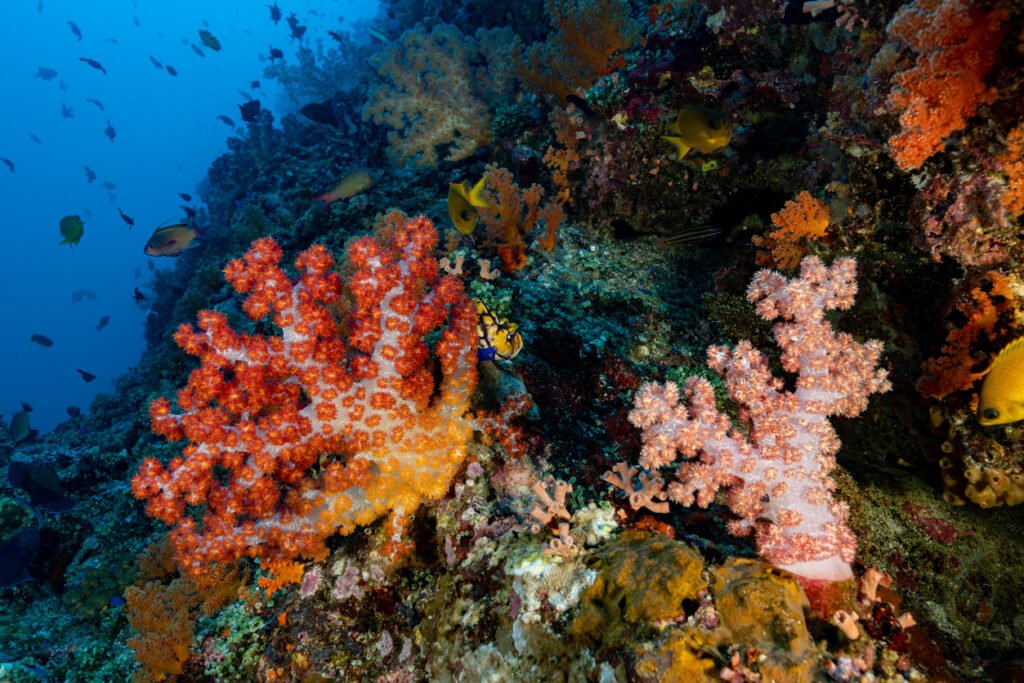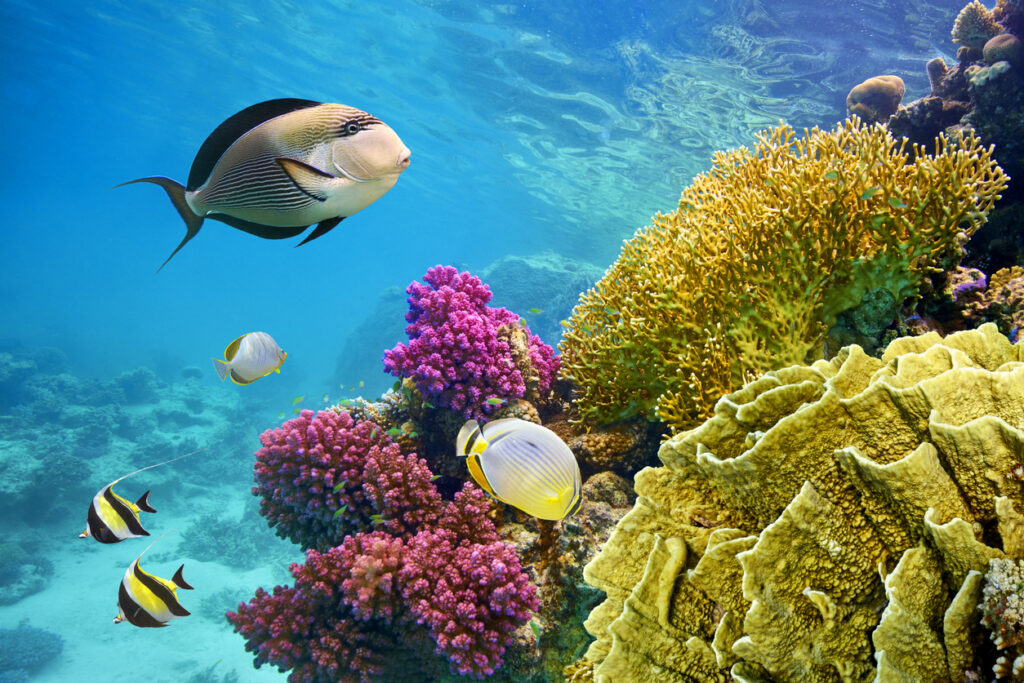There’s no denying it – coral reefs are truly beautiful, but they have a sad story behind them. Coral reefs are an incredibly important part of the ocean and are one of the most diverse habitats in the world, but if we’re not careful, they won’t be around for much longer.
Sometimes called the rainforests of the sea, coral reefs are home to around 25% of all marine life and provide a number of benefits both to the planet’s biodiversity and the economy. However, coral reefs are also one of the most compelling cases as to the consequences of climate change. In this guide, we’ll answer some of the most important questions about the future of coral reefs, including why they are bleaching.
What are coral reefs and how are they formed?
Coral reefs are incredible to look at, but what exactly are they? You’d be forgiven for thinking they are a plant, but corals are in fact animals. Corals are marine invertebrate animals known as polyps, which makes them closely related to jellyfish and sea anemones. They secrete a rocky exoskeleton made of calcium carbonate, which gives them a hard exterior for protection. They are also a sessile species, which means they are immobile.
Coral reefs begin to form when the free-swimming coral larvae attach to rocks or other objects before they begin to grow and reproduce. Over many years, this secretion creates large structures that reach multiple metres in length, resulting in corals that live together in large colonies. It is these colonies that make up a coral reef. Furthermore, it’s this calcium carbonate that creates the perfect foundation for baby corals to settle on, but the likes of seaweed, sponges and molluscs will also add to the structure of coral reefs. When these organisms die, they became part of that foundation for new coral.

The lifespan of a coral reef
The likes of barrier and atoll reefs are some of the oldest habitats in the world. Corals can grow at various rates and it can depend heavily on the conditions. Growth rates can vary between 0.3-2cm per year for large corals, while branching corals can grow up to 10cm per year. With that in mind, it can take thousands – 10,000 to be precise – of years for a coral reef to form.
Corals need a particular range of conditions in order to grow and thrive. Reef-building corals need a specific temperature of the water, usually between 23-29C, although in some cases they can still survive and tolerate temperatures as low as 20C or as high as 32C. With this in mind, coral reefs are usually found in tropical and semi-tropical water.
Reef-building corals also need help from algae in order to flourish. Known as zooxanthellae, this algae grows and lives inside the corals, providing them with food and energy through the process of photosynthesis. It is actually the zooxanthellae that provides corals with their beautiful colours. In return, the corals provide protection for the algae.

Environmental impact of coral reefs
The main global threat to coral reefs is the increase in the ocean’s temperature, followed by an increasing level of carbon dioxide in the water. Should coral reefs begin to disappear, it would have a devastating effect on marine life. For starters, 25% of marine life would lose its habitat which would be detrimental to the biodiversity of the ocean.
What’s more, coral reefs can provide protection to coastlines and without it, coasts would lose a natural buffer against waves and weathering. This would leave shorelines vulnerable to the likes of erosion and sea levels rising.
What happens when coral reefs suffer?
Environmental changes such as increased ocean temperature, pollution and overexposure to sunlight or extreme low tides can have a negative effect on corals and their reefs.
In the Pacific Ocean, there are 2 distinct climate patterns known as El Niño and La Niña. El Niño in particular can add a further spurt of warmth to the already overheating planet. The onset of this creates weaker easterly winds, allowing warm water to spread back through the Pacific, while La Niña causes the ocean to absorb more heat when the Pacific Ocean is at its coolest. In Australia, these weather events can increase the chance of mass coral bleaching across the Great Barrier Reef.
Coral bleaching occurs when the coral becomes stressed, usually because of increased temperatures and other changes in their environment. When the coral is stressed, they expel the microscopic algae that live amongst them and the colour of the coral will begin to fade to white. This is known as bleaching. Without the zooxanthellae algae, corals become more vulnerable, losing its main source of food and could be more prone to disease.
Once corals are bleached, it’s highly likely that they won’t recover and will eventually die. However, if the coral is able to reclaim its food source, it may begin to recover but it could take up to 10 years to achieve this in full.

What can be done to prevent coral bleaching?
One of the most important ways to reduce and prevent coral bleaching is by slowing down climate change. You can also avoid using pesticides and fertilisers that might end up in the waterways. Some other helpful ways to protect corals are hopefully things you’re doing already – like recycling and conserving water.
You can see corals for yourself, up and close and personal at our Coral Cave exhibit! This exciting and colourful exhibit replicates the reefs that can be found across the Indo-Pacific oceans. Check out our opening times and more on our website to plan your visit.